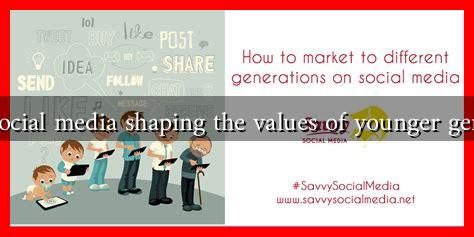-
Table of Contents
How is Social Media Shaping the Values of Younger Generations?
In the digital age, social media has become an integral part of daily life, especially for younger generations. Platforms like Instagram, TikTok, Twitter, and Snapchat are not just tools for communication; they are powerful influencers that shape values, beliefs, and behaviors. This article explores how social media is molding the values of younger generations, examining both positive and negative impacts.
The Rise of Social Media Influence
Social media’s influence on younger generations is profound. According to a report by the Pew Research Center, approximately 95% of teenagers have access to a smartphone, and 45% say they are online almost constantly. This constant connectivity has led to a shift in how values are formed and expressed.
Positive Impacts of Social Media on Values
While social media can have negative effects, it also fosters positive values among younger users. Here are some of the beneficial impacts:
- Awareness and Activism: Social media platforms have become vital for raising awareness about social issues. Movements like #BlackLivesMatter and #MeToo gained momentum through social media, encouraging younger generations to engage in activism and advocate for change.
- Diversity and Inclusion: Social media promotes diverse voices and perspectives. Young people are exposed to various cultures, lifestyles, and ideologies, fostering a sense of empathy and understanding.
- Community Building: Online communities allow individuals to connect over shared interests, creating a sense of belonging. This is particularly important for marginalized groups who may feel isolated in their offline lives.
Negative Impacts of Social Media on Values
Despite its benefits, social media also has detrimental effects on the values of younger generations. Some of these include:
- Comparison and Self-Esteem Issues: The curated nature of social media often leads to unhealthy comparisons. Young people may feel inadequate when comparing their lives to the seemingly perfect lives of influencers and peers.
- Instant Gratification: The culture of likes and shares can create a desire for instant validation, leading to a focus on superficial metrics of success rather than deeper, more meaningful achievements.
- Polarization: Social media can create echo chambers where users are only exposed to viewpoints that reinforce their own, leading to increased polarization and a lack of critical thinking.
Case Studies and Statistics
Several studies highlight the impact of social media on youth values. A study published in the journal Cyberpsychology, Behavior, and Social Networking found that heavy social media use is linked to increased anxiety and depression among adolescents. Furthermore, a survey by Common Sense Media revealed that 50% of teens feel pressure to post content that will get a lot of likes.
On the other hand, a report by the Global Web Index found that 54% of young people use social media to learn about social issues, indicating a growing trend towards social consciousness.
Balancing Social Media Influence
As social media continues to evolve, it is crucial for parents, educators, and society to guide younger generations in navigating these platforms. Here are some strategies to promote healthy social media use:
- Encourage Critical Thinking: Teach young people to question the content they consume and to seek out diverse perspectives.
- Promote Digital Literacy: Equip youth with the skills to discern credible information from misinformation.
- Foster Real-Life Connections: Encourage offline interactions to balance online relationships and reduce feelings of isolation.
Conclusion
Social media is undeniably shaping the values of younger generations, influencing their perceptions of self-worth, community, and social responsibility. While it offers opportunities for awareness and connection, it also presents challenges that can affect mental health and societal cohesion. By fostering a balanced approach to social media use, we can help young people harness its positive aspects while mitigating its negative impacts. As we move forward, it is essential to remain vigilant and proactive in guiding the next generation through the complexities of the digital landscape.
For further reading on the impact of social media on youth, you can visit Pew Research Center and Common Sense Media.

